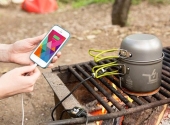I have inherited 3 blackout tents, with lights for each and ventilation fans for at least one. This is an example
https://www.youtube.com/watch?v=e1suSz5ObVs
The details are:
40cm x 80cm floor x 50cm high propagation tent with two 20W led lights. these will cost 23c a day to run lights for 18 hours.
Grow Tent 60 x 60cm floor x 180cm high with 250W Halogen bulb. It will cost $1.60 a day to run for 18 hours.
Grow Tent 150 x 150cm floor x 120cm high with 500W Halogen bulb. It will cost $3.20 a day to run for 18 hours.
I have had no previous experience using grow lights at all, but do have tables of seedlings in front of the lounge room window each winter/spring.
I am in a very temperate climate on 8 acres. I can understand the use of a propagation tent to ensure that emerging seed/seedlings stay warm enough to sprout well, but don't grow long and sideways towards a window light. Especially fussy tropical things like Bottle gourd or papaya seeds that want to stay at 25C soil temperature. I also appreciate that they will help keep the soil most with tiny seeds like celery etc. I do wonder about whether they will easily damp off, however, in a closed environment.
Are these of any greater benefit than a cheap Temu seedling tray with clear top and LED lights built in put on top of the fridge or on a heat mat? (Which I have just bought to try for the first time with $1 per seed papayas when I got these tents.)
I wonder about the Grow tents, however. Unless you are growing something illegal or have free excess electricity, can they ever be cost effective to grow plants to maturity? Are they just a fancy hobby for apartment dwellers, and why would they not want to have the plants in full view with just grow lamps - unless it is for places that have very cold and low humidity winters?
This is maybe a topic for another thread, but if I do make my dream greenhouse with passive heating and wood fire back-up heating, and have over 9 hours of natural light on our shortest day, and minimum temperatures that never go below -4C, is it worth the cost to extend the daylight hours with LED lights unless the plants require it for fruiting (e.g. Capsicum)?


